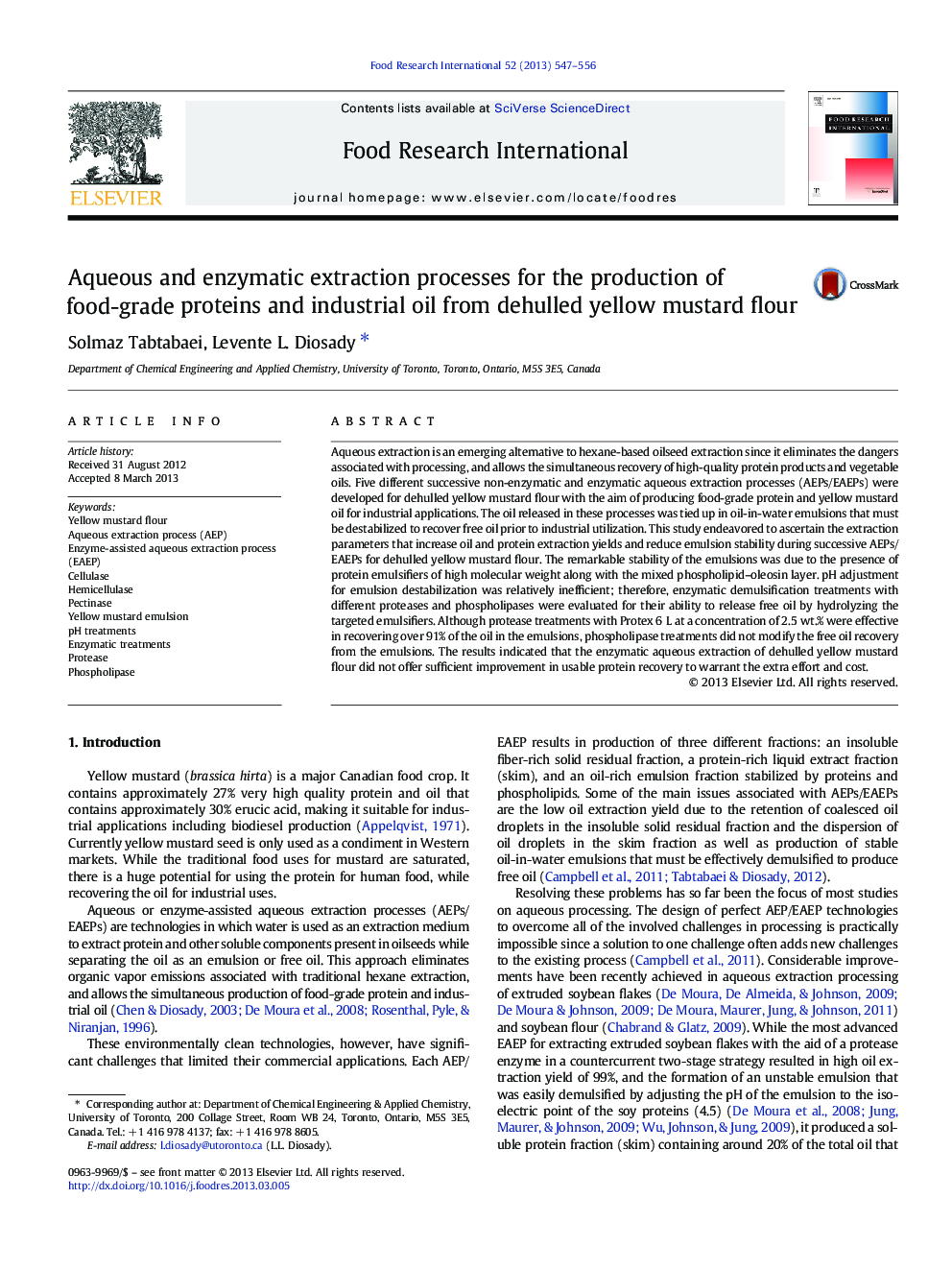| Article ID | Journal | Published Year | Pages | File Type |
|---|---|---|---|---|
| 4561677 | Food Research International | 2013 | 10 Pages |
•We compared enzymatic and non-enzymatic aqueous extraction processes.•The distribution of oil and protein between fractions was determined.•The effect of extraction parameters on the stability of emulsions was determined.•The use of carbohydrases did not improve the recovery of usable protein.•The two-step aqueous extraction process at pH 11 gave optimal results.
Aqueous extraction is an emerging alternative to hexane-based oilseed extraction since it eliminates the dangers associated with processing, and allows the simultaneous recovery of high-quality protein products and vegetable oils. Five different successive non-enzymatic and enzymatic aqueous extraction processes (AEPs/EAEPs) were developed for dehulled yellow mustard flour with the aim of producing food-grade protein and yellow mustard oil for industrial applications. The oil released in these processes was tied up in oil-in-water emulsions that must be destabilized to recover free oil prior to industrial utilization. This study endeavored to ascertain the extraction parameters that increase oil and protein extraction yields and reduce emulsion stability during successive AEPs/EAEPs for dehulled yellow mustard flour. The remarkable stability of the emulsions was due to the presence of protein emulsifiers of high molecular weight along with the mixed phospholipid–oleosin layer. pH adjustment for emulsion destabilization was relatively inefficient; therefore, enzymatic demulsification treatments with different proteases and phospholipases were evaluated for their ability to release free oil by hydrolyzing the targeted emulsifiers. Although protease treatments with Protex 6 L at a concentration of 2.5 wt.% were effective in recovering over 91% of the oil in the emulsions, phospholipase treatments did not modify the free oil recovery from the emulsions. The results indicated that the enzymatic aqueous extraction of dehulled yellow mustard flour did not offer sufficient improvement in usable protein recovery to warrant the extra effort and cost.
